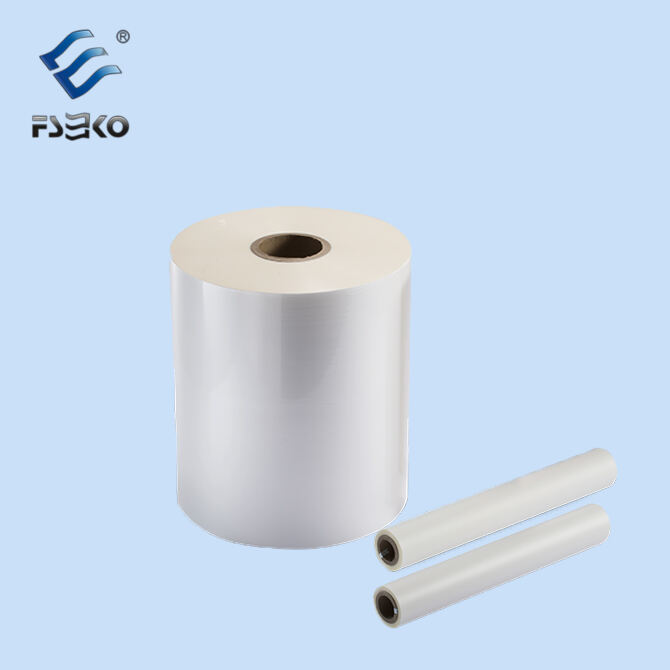Il film laminato a caldo (HLP) è uno dei diversi materiali e tecnologie che vengono impiegati per migliorare l'aspetto dei materiali stampati, come libri e brochure. Questo porta a un ulteriore vantaggio di rendere il prodotto più eco-sostenibile. Anche con l'aumentata integrazione dei media digitali nella nostra vita quotidiana, i prodotti stampati fisici non sono ancora completamente scomparsi. Poiché le persone continuano a spostarsi verso opzioni più ecologiche, noi dell'industria della stampa siamo incaricati di integrare misure che riducano gli sprechi. Quindi, con la crescente preoccupazione per l'ambiente, discutiamone attualmente in dettaglio.
La laminazione a caldo fornisce una finitura lucida, opaca o metallizzata a brochure, biglietti da visita e imballaggi, tra gli altri articoli. Questo avviene attraverso l'uso di alte temperature con l'uso di Materiali Sensibili alla Pressione (PSM). Come risultato di questo processo, le stampe laminate ricevono protezione da umidità, danni fisici, alte temperature e luce solare, migliorando anche la qualità e l'aspetto di un articolo. Insieme a questo, i prodotti laminati sono ecologici poiché questo processo elimina la necessità di ristampe regolari, riducendo così i rifiuti prodotti dato che la maggior parte dei beni laminati può durare molto più a lungo.
Il film di laminazione a caldo offre un valore aggiunto per le aziende in termini di estensione della vita utile dei prodotti stampati, il che aiuta a ridurre l'impronta di carbonio e quindi a promuovere pratiche leggermente più sostenibili. Questo segue l'idea che quando le aziende utilizzano la laminazione, riducono drasticamente la quantità di nuovi materiali che devono essere stampati. I nuovi materiali energetici sono costosi da lavorare e utilizzare, e i nuovi materiali stampati consumano molta energia. La maggior parte dei materiali animati consuma molta energia, ma la laminazione riduce complessivamente i processi in modo considerevole a un modo di produzione modernizzato.
Inoltre, molti film termici sono prodotti con ingredienti ecologici. Lo sviluppo della laminazione in materia prima biodegradabile e riciclabile garantisce che il processo di laminazione non danneggi l'ecosistema. Questo cambiamento è particolarmente importante a causa del crescente interesse dei consumatori per ciò che utilizzano e come influisce sull'ambiente. I praticanti di queste misure, quindi, sono in grado di operare bene senza infrangere la legge e possono accedere al vasto mercato dei clienti ecologici.
I prodotti laminati raccontano una storia poiché non solo li proteggono ma li rendono anche più attraenti dal punto di vista visivo. Con l'opzione di una finitura opaca o lucida, la laminazione aggiunge qualcosa di speciale al prodotto finale fornendo un'attrattiva accattivante per il mercato target. Questo, a sua volta, incoraggia un livello di coinvolgimento del mercato che è probabile porti a un aumento delle vendite. La sostenibilità, come la vedono alcune persone, non deve venire a scapito di qualche qualità.
Con l'evoluzione della domanda nell'industria della stampa, soluzioni come il film di laminazione a caldo saranno molto richieste. Le aziende che aiutano a salvaguardare l'ambiente perseguendo pratiche ecologiche non solo aiuteranno l'ambiente, ma saranno anche avvantaggiate nel mercato competitivo attuale. Ora che la tecnologia e i materiali continuano a progredire, c'è una promessa nel futuro del film di laminazione a caldo poiché porterà a soluzioni di stampa più ecologiche.
Formando l'ultima parte di questo documento, il film di laminazione a caldo contribuisce significativamente a fornire soluzioni di stampa ecologiche. Aumenta il ciclo di vita della stampa, riduce gli sprechi e offre un aspetto e una sensazione migliori ai prodotti, in linea con le tendenze dell'industria verso la sostenibilità. Le aziende che vorranno rimanere competitive sul mercato sono incoraggiate a farlo adattandosi a queste pratiche, poiché i consumatori hanno recentemente mostrato una domanda per alternative più verdi.


